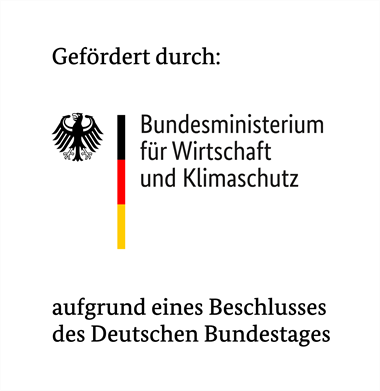Globalization has led to an exponential increase in traffic density on the sea routes due to the strong growth in world trade. At the same time, a significant increase in noise levels in the oceans has been observed in recent years. For this reason, underwater acoustics have been a high priority for the International Maritime Organization (IMO) since 2008. The aim is to reduce the anthropogenic acoustic pollution of the oceans in order to ensure the health of marine ecosystems.

| Title: | Acoustic prognoses for route and operating profile optimization |
| Term: | 2025 – 2027 |
| Project manager: | Rhena Klose |
| Funding: | Bundesministerium für Wirtschaft und Klimaschutz |
| Project administration: | EuroNorm GmbH |
| Reg.-No.: | 49VF240046 |
As part of the preliminary research, the project aims to provide a concept and the tools by which an acoustic route and operating profile optimization for ships can be implemented. The aim is to dynamically determine the individual noise output put of a ship in order to enable noise reduction through active route or driving profile adjustments right during operation. In addition to the goal of noise reduction, economic aspects such as fuel consumption and operating costs must also be considered, taking into account travel times and current environmental conditions.
By achieving this goal, the anthropogenic impact on marine life due to noise emissions from commercial shipping can be minimized by changing sailing behaviour and the protection of marine life can be ensured. The AkuOpt project lays the foundation for this and serves to demonstrate practical measures for noise reduction in ship operations. These noise-reducing operational measures are to be identified through targeted research in the field of structure-borne and water-borne noise as well as the analysis of environmental conditions and operating profiles.
The noise emissions caused by ships are to be determined and specific recommendations made for noise-reducing measures during operation, such as changing the operating point or taking alternative routes. This includes the development of an algorithm for an acoustic prognosis tool for ships, which provides information on whether protected areas may be passed through depending on the local conditions or how much the speed must be reduced in order not to exceed certain noise levels.
In order to be able to calculate alternative operating conditions or routes, the noise emissions of a ship under certain environmental influences must be known. This requires the determination of the currently emitted sound levels in near real time. This can be done, for example, with sound monitoring systems already available on board or with an acoustic forecasting tool that calculates the current sound emission based on a small amount of input data. Both approaches are to be investigated in the research project.